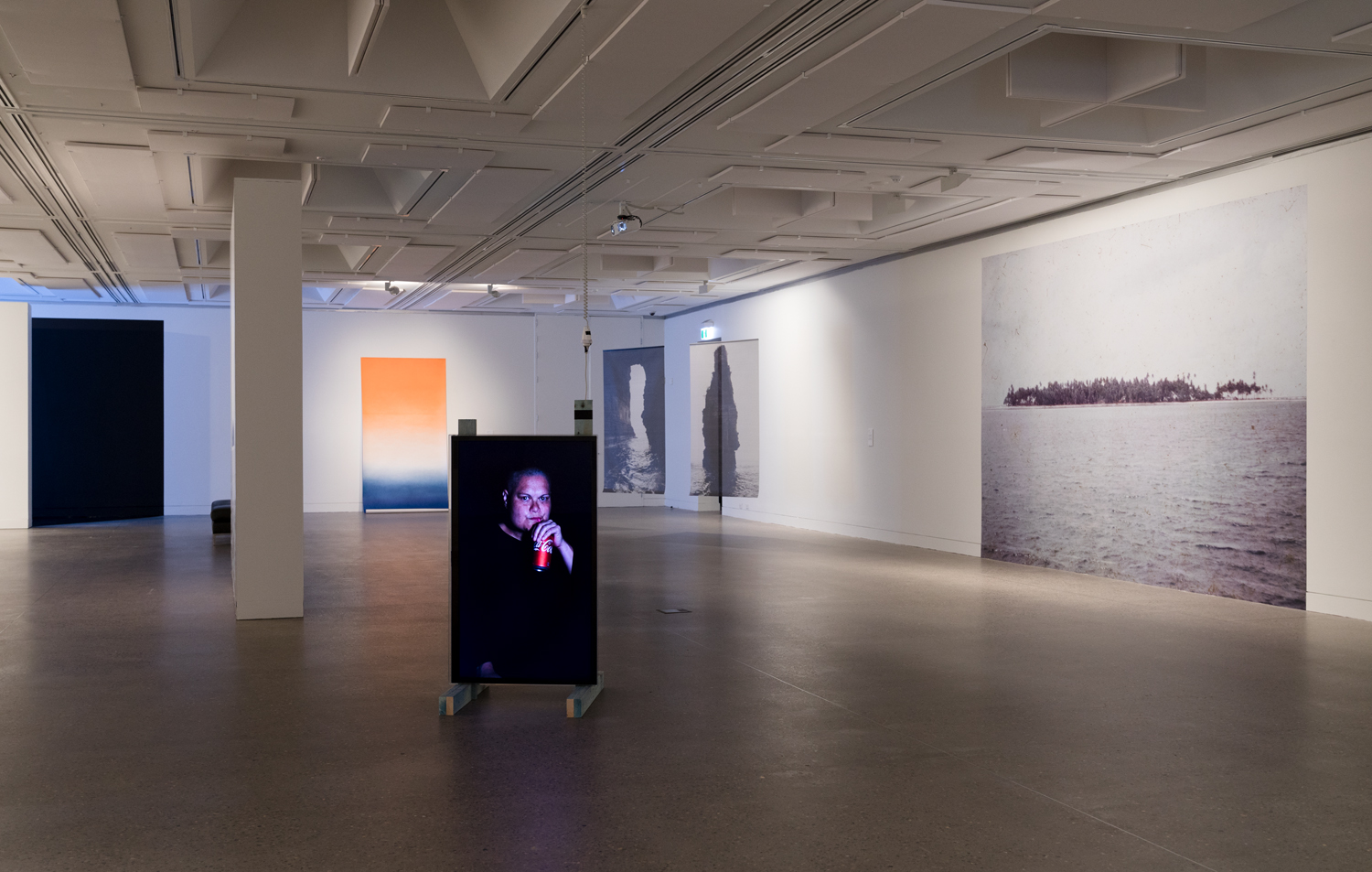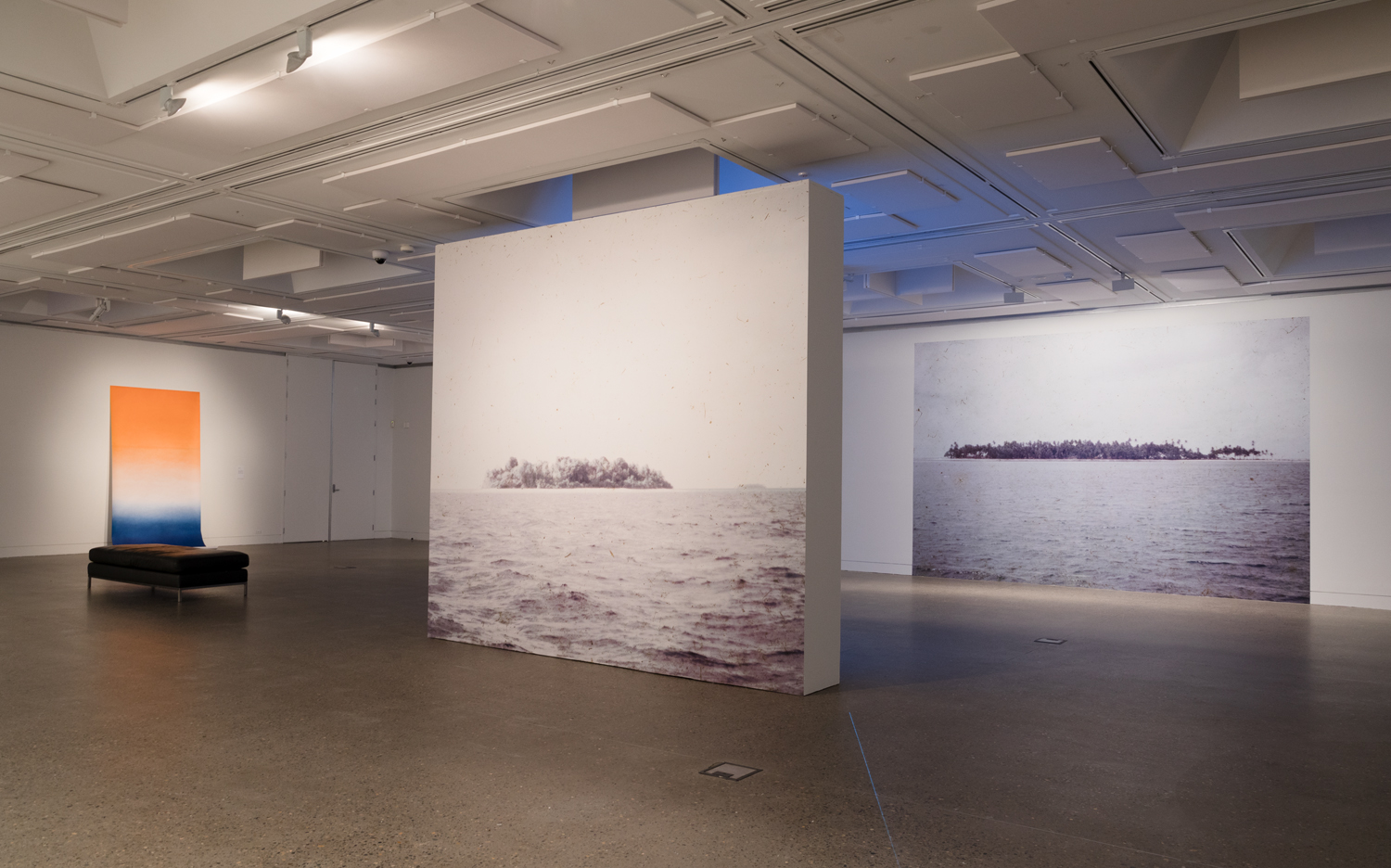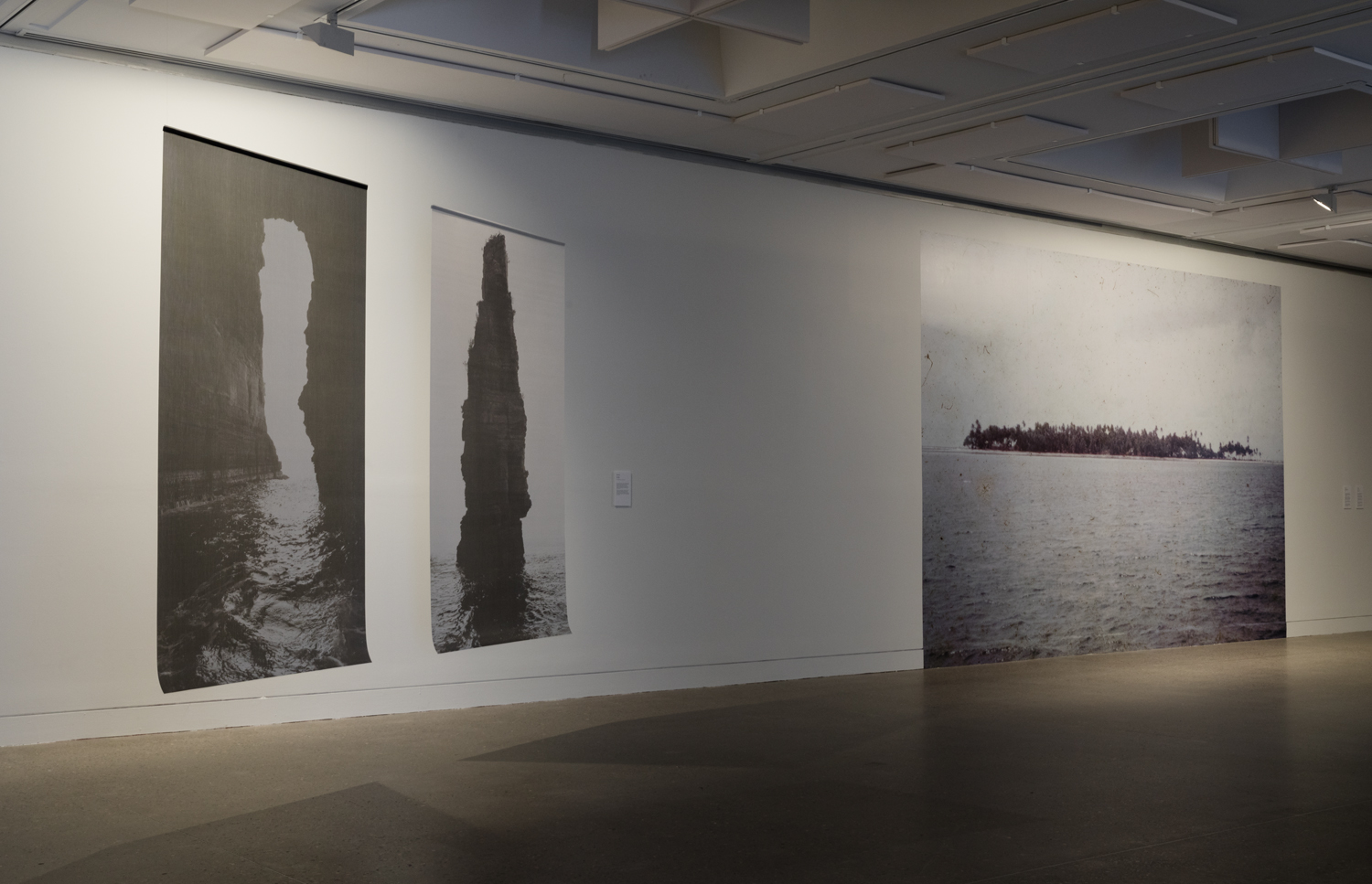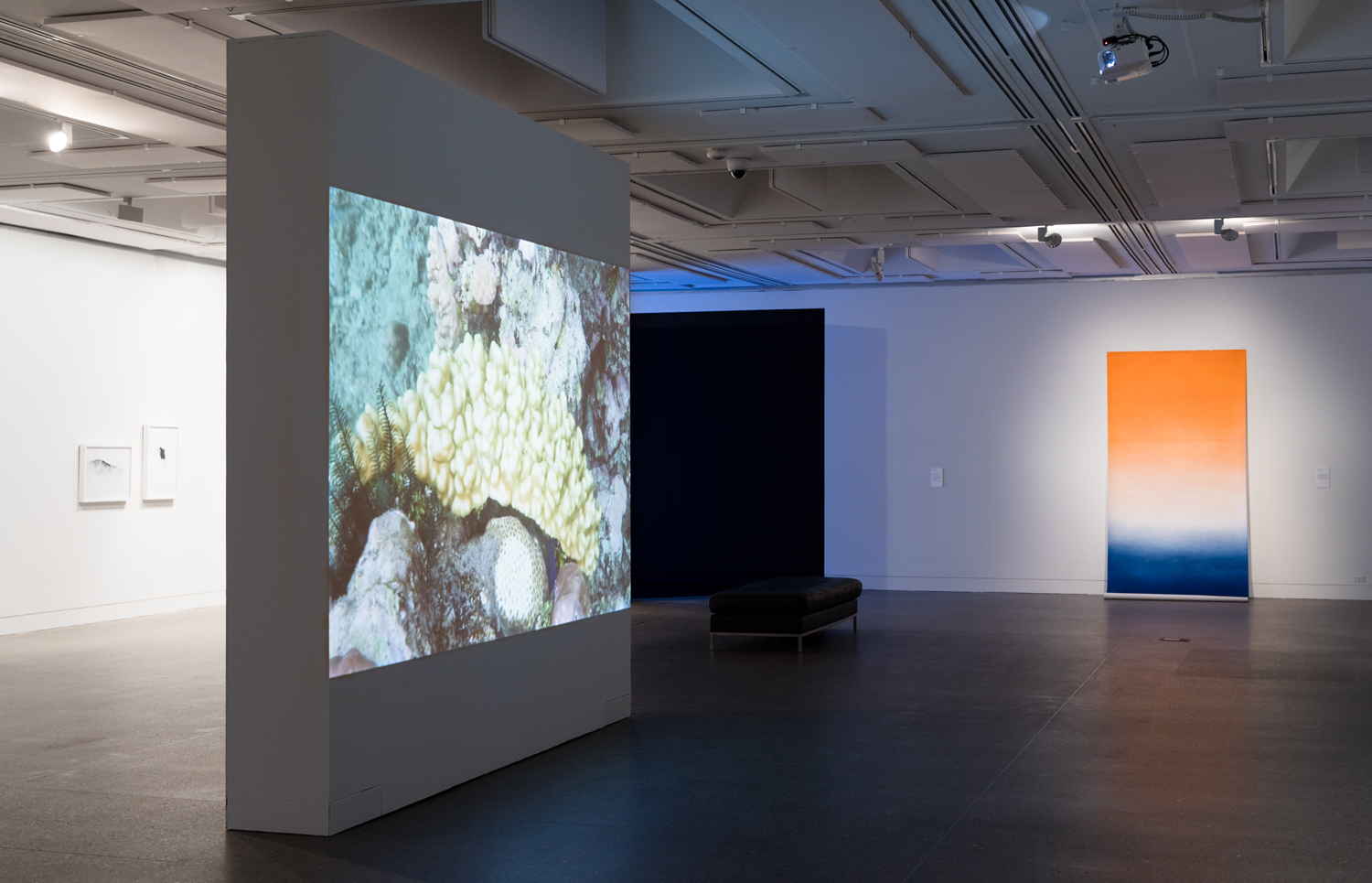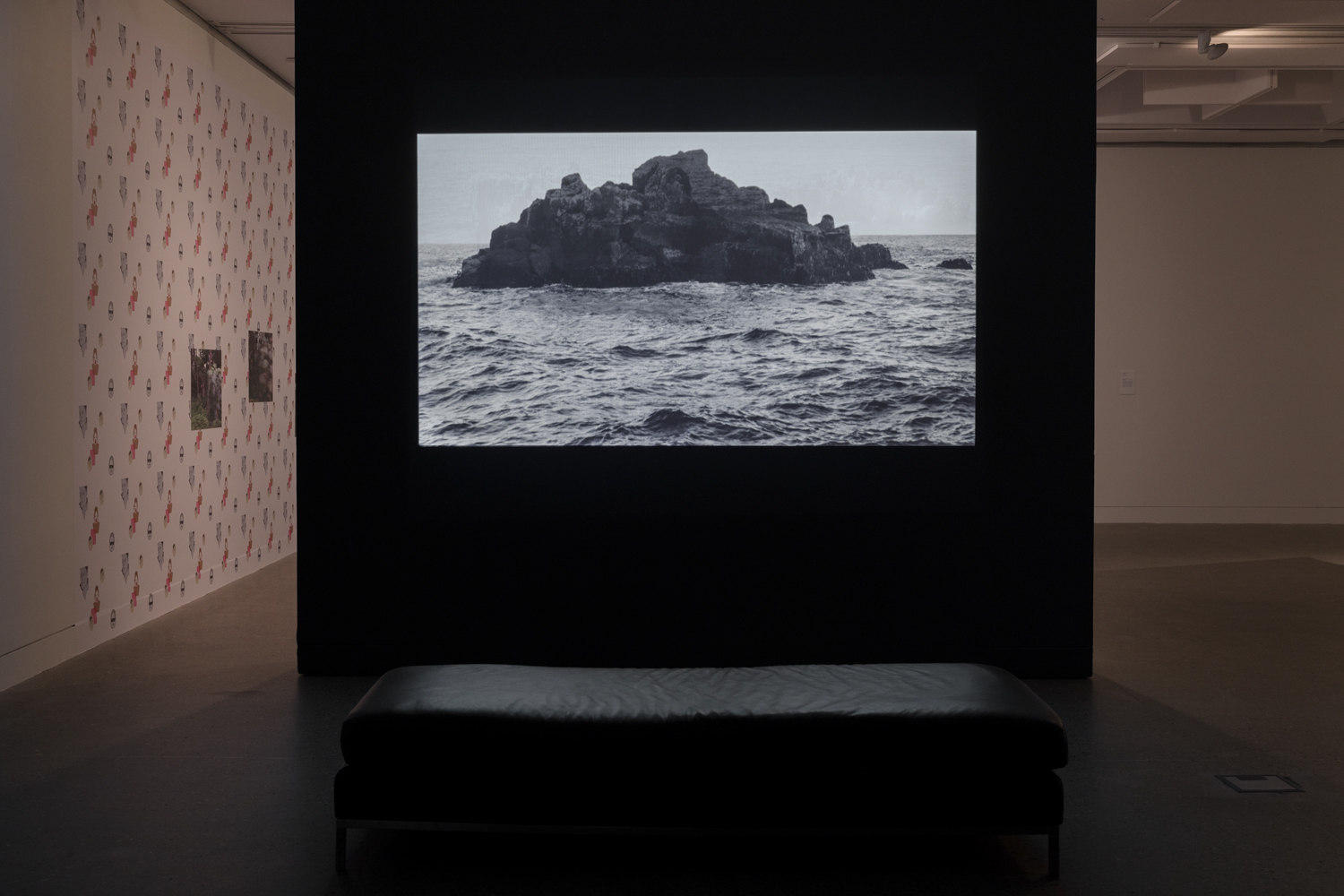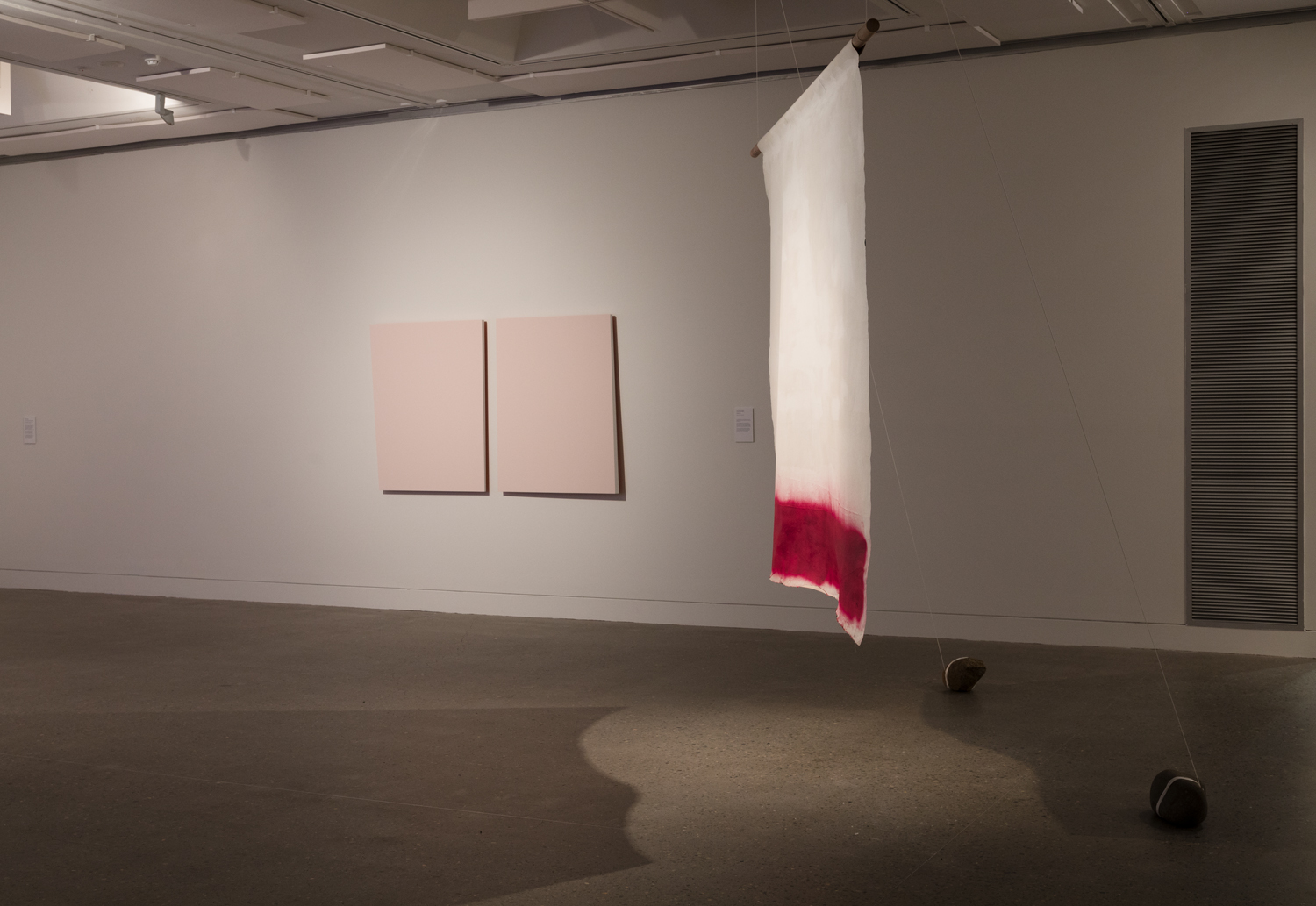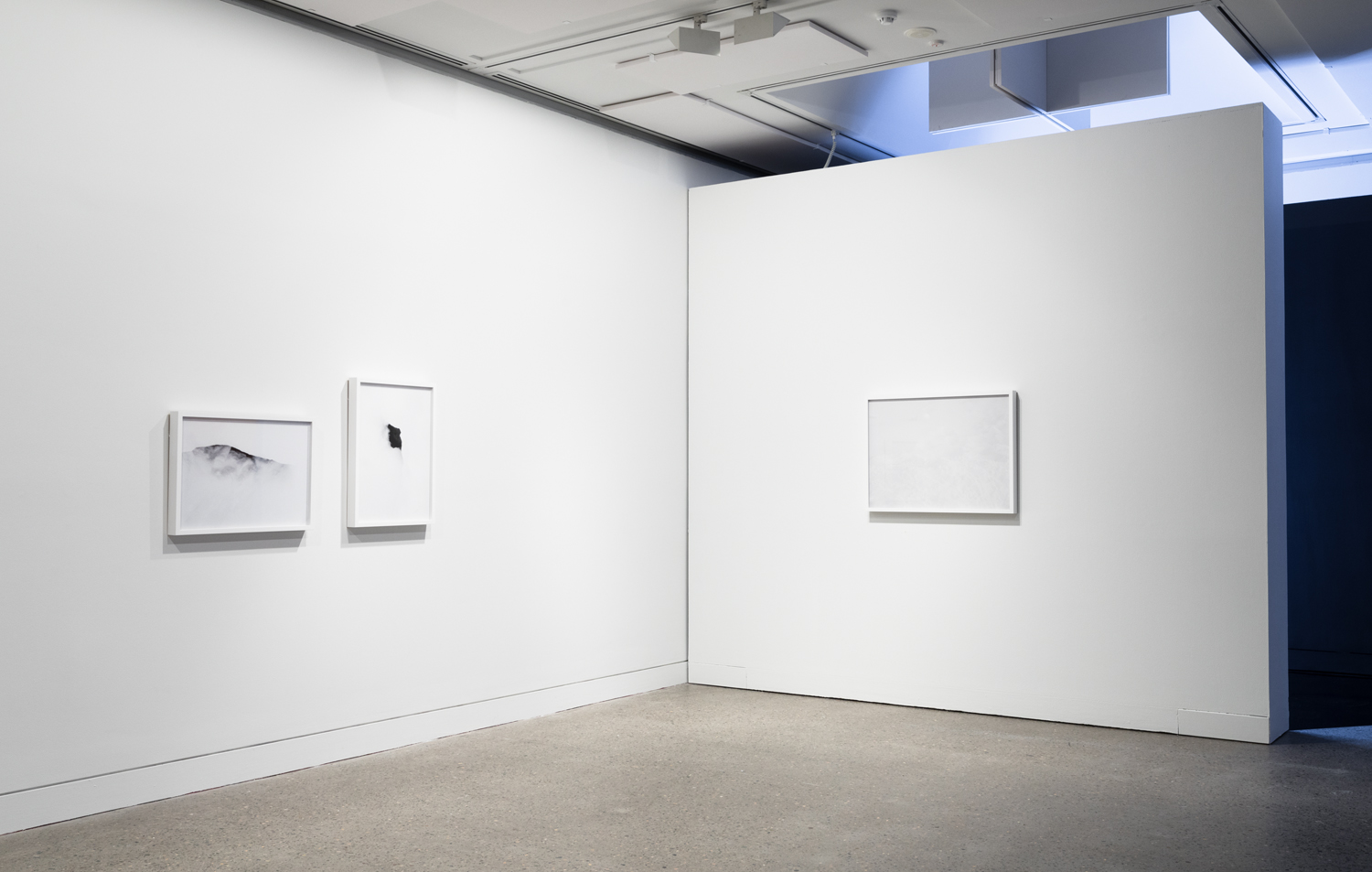21 April 2018 to 11 June 2018

Image: Taloi Havini Imaginary Line II 2018, digital print.
The definitive edge of the island leads to questions of definition of borders and by extension definition of identities – personal, cultural, political. Existing as a haven from the ‘mainland’, and a sovereign territory of containment, the island is a construct of time and space that lives outside of the ‘real world’. But as literary references suggest (‘No Man is an Island’) might it just be an unreachable space or idea, like a mirage – just a trick of the light.
Each of the five artists referenced the photographic or utilized the lens in production, and it is through this apparatus that the island is viewed. Through the telescopic capabilities of the lens, the artists drew close and pull back, oscillating their vision from detail to whole - from examinations of the socio/political island state, to distant explorations that address the island as a source for longing and illusion. From these varied viewpoints the works collectively mapped the island concept revealing compelling conversations about identity, vision and space.
ABOUT THE ARTISTS
Yvette Hamilton is a lens-based artist whose practice takes an exploratory approach to vision and visuality, specifically in relation to the photographic. For Vanishing Point she created a suite of three new works that all reflected on the idea of ‘phantom island’ – an island that has been mapped, but through mistake or subterfuge has subsequently been proven to not exist. In Dead Reckoning I –III the artist repeatedly attempted to draw, from memory, the outline of a series of personally significant islands, aiming to explore the role of error and failure within both navigation and memory. In the large light-based installation, ‘I Just Have This Feeling’, semaphoric symbology act as quasinavigational markings that attemptted to chart a course through an unknown sea. And in the eponymous Phantom Island series, a collection of animated lightboxes aimed to draw parallels between the idea of the self and the notion of a phantom island.
Ellen Dahl is a Sydney based, Norwegian born artist working across photography, video, sound and projection. Often with the landscape as an entry point, her practice traces the intersection of memory and identity with a physical, political or psychological sense of place. For Vanishing Point she created a body of black/white photographic works that reflects on the island as the notion of the definitive edge, with its hard boundaries and fixed limits. Where one substance ends and another starts. Me and you. Us and them. A metaphor for the nation state. Yet the shoreline is corroding and new islands are born.
Taloi Havini works across ceramics, photography, video and mixed media installation. Taloi was raised in the Autonomous Region of Bougainville where islands are firmly part of Taloi’s consciousness. On a recent trip back to Bougainville she discovered a collection of severely deteriorated Kodachrome slides from her parent’s archive. Seeing them evoked ideas of island life in the tropics during the ‘60s and ‘70s, some depicting the very places where Taloi was raised in the 80s. For Vanishing Point Taloi digitally scanned and transferred slides to wallpaper, titled an imaginary line, the suite of works consisted of large-scale photographic images of islands, including one serving as a backdrop to a mounted underwater video titled, over and over. The silent video was a compilation of Taloi’s experiences skin diving including footage of coral spawning.
Consuelo Cavaniglia is a cross-disciplinary artist whose work focuses on how we see and understand space. Her work often employs subtle visual illusions to unsettle our sense of space and suggest instability and uncertainty within the structures that we inhabit. The two untitled works she presented in Vanishing Point relied on illusion. They tied to narratives around the idea of the island that described a place of desire, places that are not real, visions and mirages. Her large airbrushed work, Untitled (2017), referenced infinity screens – screens used in photographic shoots that locate people or objects in non-spaces -supposedly neutral spaces- or invented spaces, and spaces other than the one the subject is in.
View the exhibition catalogue below.

